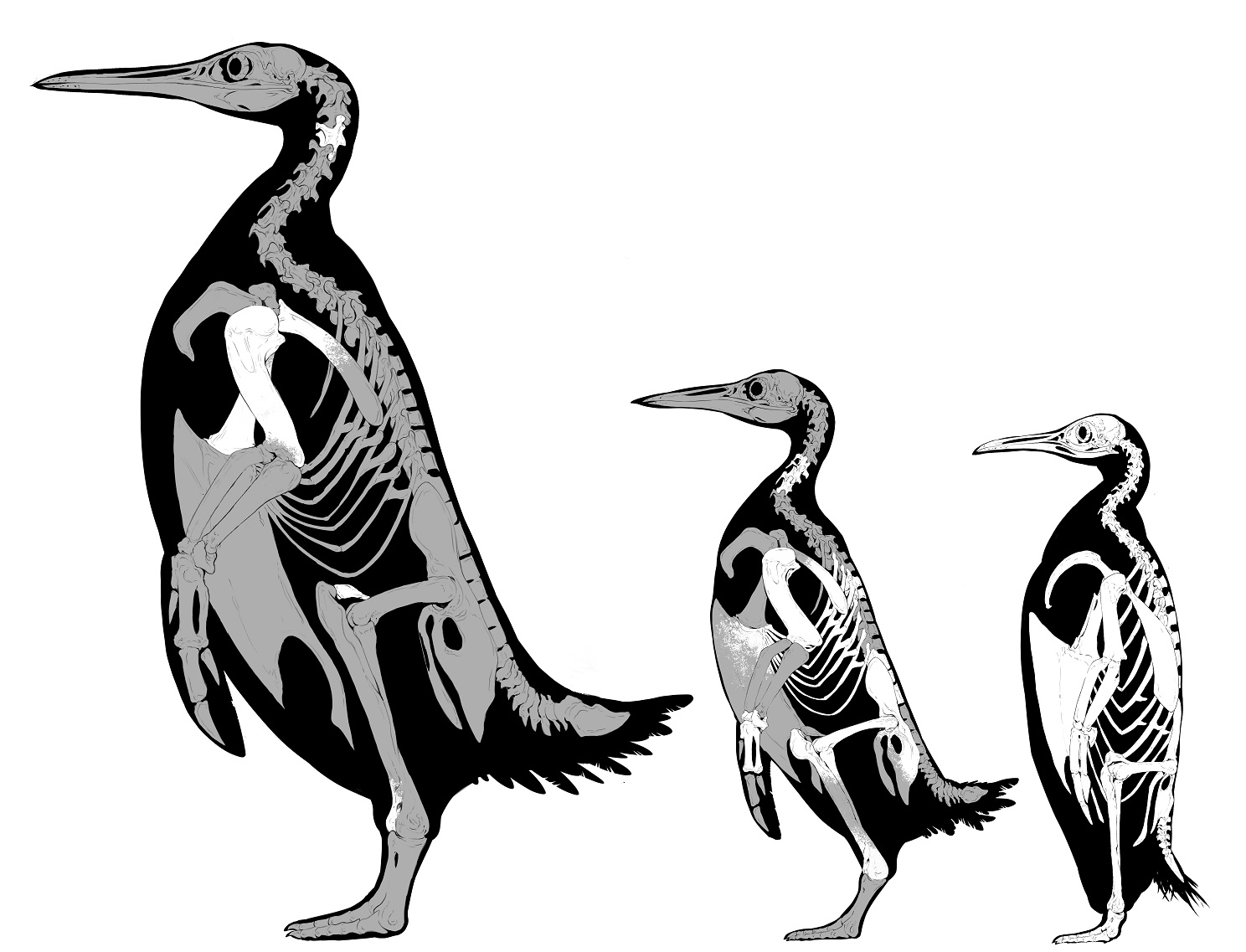Christ’s Fellow Dr Daniel Field is part of an international team that has identified fossil bones from a new species of ancient penguin, thought to be the largest penguin to have ever lived.
The heavyweight species, named Kumimanu fordycei, was found in New Zealand and weighed more than 150 kilograms - more than three times the size of an Emperor Penguin, the largest living penguin species.
The team, led by Daniel Ksepka of The Bruce Museum in Connecticut, and Alan Tennyson from the Museum of New Zealand Te Papa Tongarewa, reports their discovery in the Journal of Palaeontology.
Using laser scanners to create digital models of the bones the team compared them to other fossil species. To estimate size, they measured hundreds of modern penguin bones and used flipper bone dimensions to predict weight.
They concluded that the largest flipper bones belonged to a penguin weighing approximately 154kg. The largest living species today - the Emperor Penguin - typically weighs between 22 and 45 kg.

Dr Field said:
“Fossils provide us with evidence of the history of life, and sometimes that evidence is truly surprising … at approximately 350 pounds, Kumimanu fordycei would have weighed more than [basketball player] Shaquille O'Neal at the peak of his dominance!”
A second new species of fossil penguin - Petradyptes stonehousei – was also named by the team, and weighed 50kg.
These two newly-described species show that penguins got very large early in their evolutionary history, millions of years before they fine-tuned their flipper apparatus.
The team observed that the two species retained primitive features such as slender flipper bones and muscle attachment points that resemble those of flying birds.
When asked why early penguins grew so large, lead author Dr Ksepka speculated that it made them more efficient in cold water as they would have been better at conserving body temperature.
Co-author Dr Daniel Thomas from Massey University in Auckland said:
“Large, warm-blooded marine animals living today can dive to great depths. This raises questions about whether Kumimanu fordycei had an ecology that penguins today don’t have, by being able to reach deeper waters and find food that isn’t accessible to living penguins.”

Dr Field, who is also Strickland Curator of Ornithology at the University of Cambridge Museum of Zoology, said:
“Kumimanu fordycei would have been an utterly astonishing sight on the beaches of New Zealand 57 million years ago, and the combination of its sheer size and the incomplete nature of its fossil remains makes it one of the most intriguing fossil birds ever found.
Hopefully future fossil discoveries will shed more light on the biology of this amazing early penguin.”
Reference:
Daniel T. Ksepka et al. ‘Largest-known fossil penguin provides insight into the early evolution of sphenisciform body size and flipper anatomy.’ Journal of Paleontology (2023).
Banner image credit: Dr Simone Giovanardi

